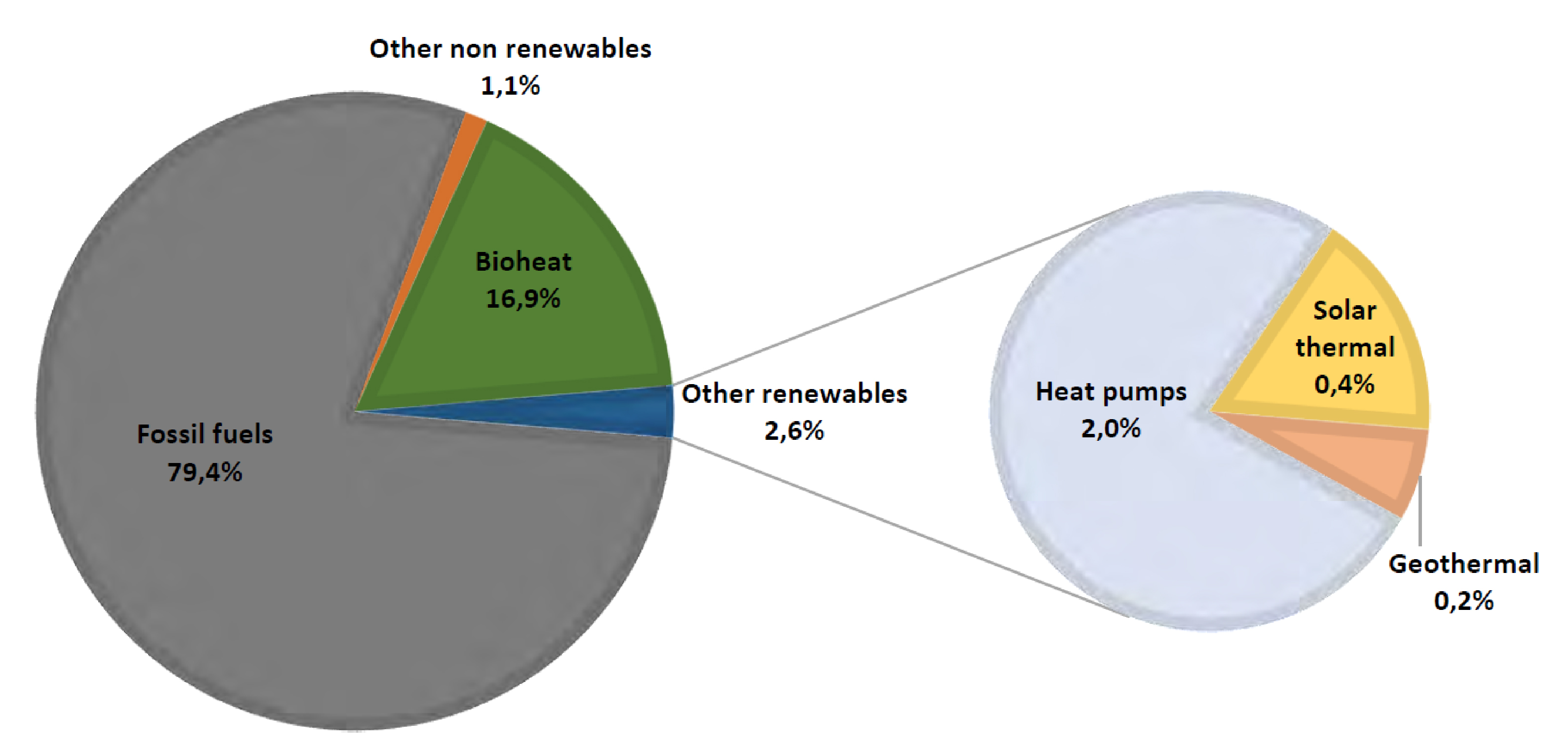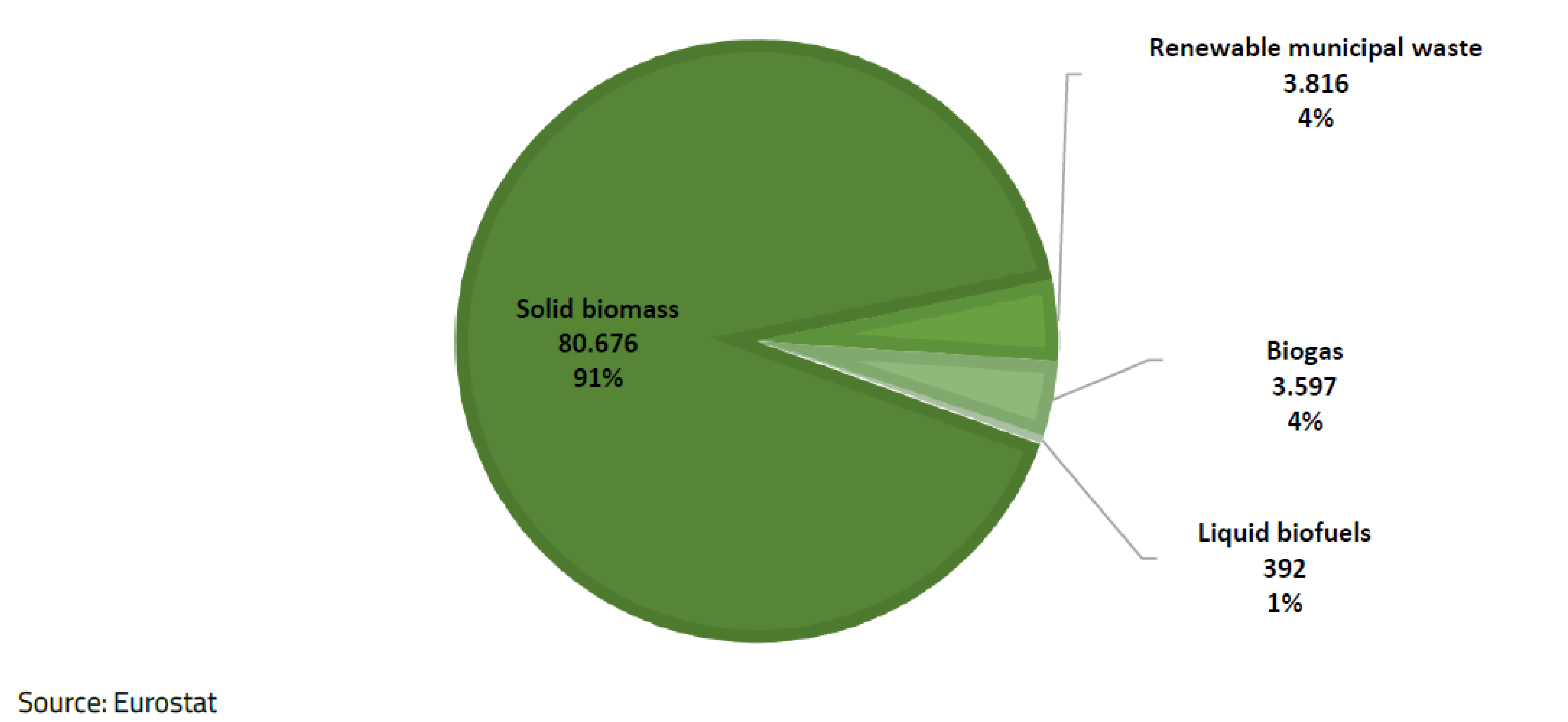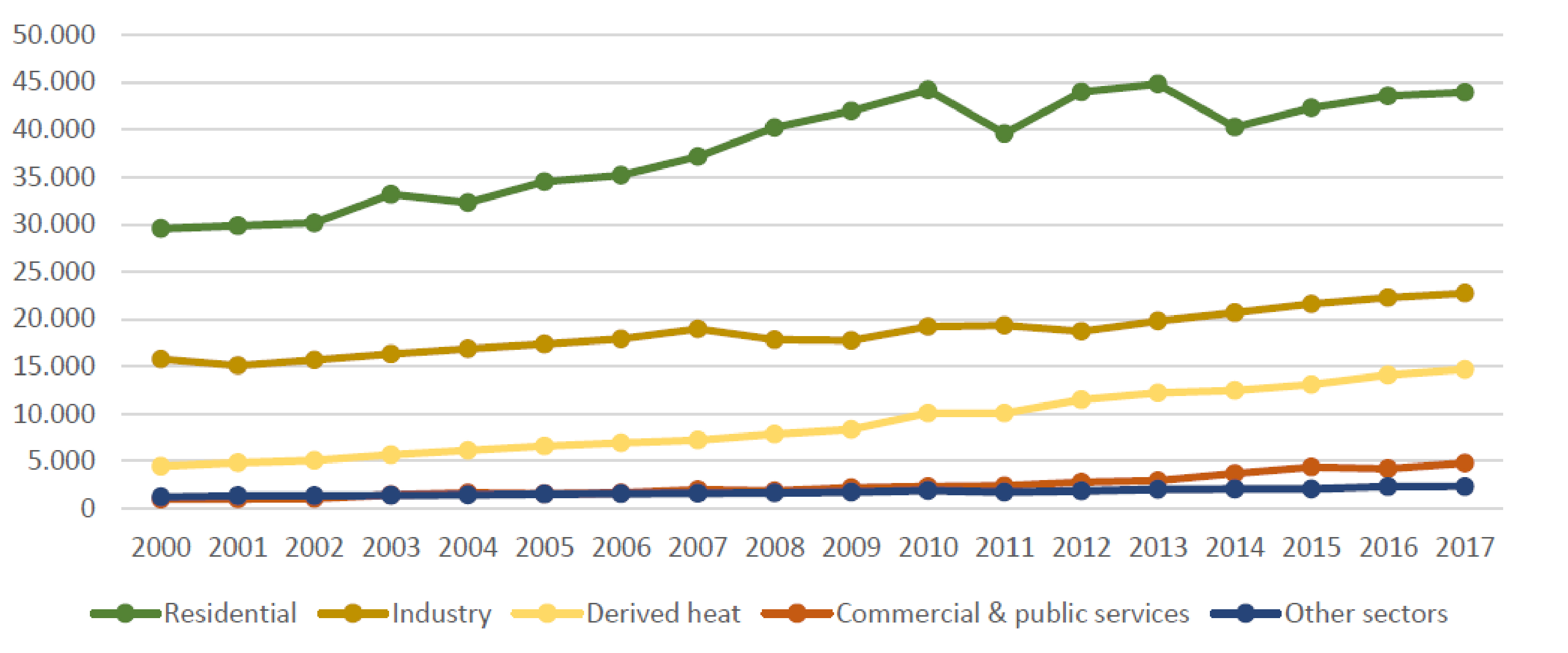Heating and cooling (H&C) (the major part being heating) represented nearly half of the final energy consumption in the EU in 2017. Therefore, it should be one of the main targets for the decarbonisation efforts. Countries such as, Cyprus, Greece, Malta, Spain, and Portugal where heating & cooling accounted for less than 37% of the total final energy consumption are countries with warmer climate conditions. Additionally, those figures do not include the electricity used for H&C. Hence, in total the H&C represents for more than 50% of the final energy consumed in the EU.
Bio-heat accounted for 16.9% of the EU-28 balance of heating and cooling in 2017 (Fig. 1), which is the largest share of all renewable energy sources: all other renewables accounted for 2.6%.

Note: Other non-renewables are mainly non-renewable waste.
Figure 1. Contribution of the different Energy Sources in Heating and Cooling in EU28 in 2017 (%)
Deployment of renewables is much slower in the heat sector than with that of the electricity sector. However, to reach the EU’s long-term decarbonisation objectives, it is essential to accelerate the efforts within this sector. Long-term strategies to decarbonize the building sector and investments in research and innovation (R&I) for high temperature needs in the industrial sector or for biomass fuel diversification will be needed.
Solid biomass is by far the main feedstock (91%) for bioheat production and inversely bioheat is the main final usage of solid biomass, 85% of the solid biomass is used for bioheat production (the rest being mainly used for bioelectricity – Cf. Bioelectricity report) (Figure 2). Both for environmental and economic reasons, this is mostly sourced from by-products of forest management operations and the wood industry, such as sawmills (Cf. biomass supply report).

Figure 2. Type of Biomass Used for Bioheat in EU28 in 2017 (ktoe, %)
At EU level, half of the heat produced from biomass is consumed by that of the residential sector (43.933 ktoe) (Figure 3). This is only counting the biomass that is directly consumed for the production of heat within households, excluding heat supplied through district heating. The residential sector is followed by 22.725 ktoe of biomass for heat in industry and 14.690 ktoe of derived heat (mostly being district heating). This important share of bioheat going to the residential and service sector (schools, hospitals, hotels) shows that there is a great number of small and medium installations producing bioheat. Other sectors include agriculture, fishing and industries not elsewhere specified, the biogas for this category is mainly used (as well as produced) in the agricultural sector (537 ktoe). The derived heat sector (district heating and CHP) is the one using most of the renewable municipal waste for heat.

Figure 3. Evolution of the Final Consumption of Bioheat by Sector in EU28 (ktoe)
The consumption of bioheat is steadily growing in all sectors, especially in the industrial and derived heat segment. The fluctuation in the residential sector can be explained by the mildness of winters and the fluctuation of fuel prices. The total bioheat has increased by 70% since 2000 to 2017, +49% for the bioheat in the residential sector, +44% in the industry, +229% in the derived heat, +378% in the commercial & public services sector. This shows that households, industries, district heating etc. are increasingly relying on biomass which is dissimilar to traditional fuels in way of showing a very dynamic market, growing on average by 3,2% every year since 2000.